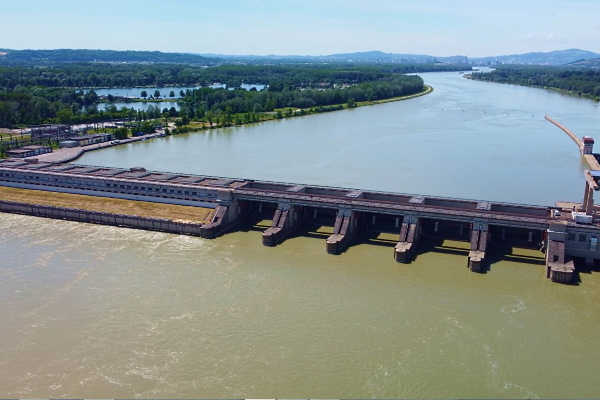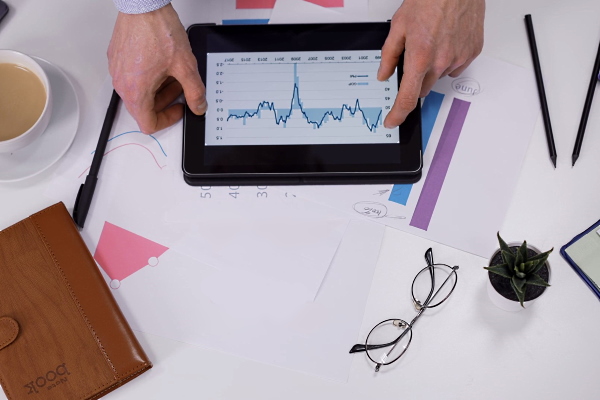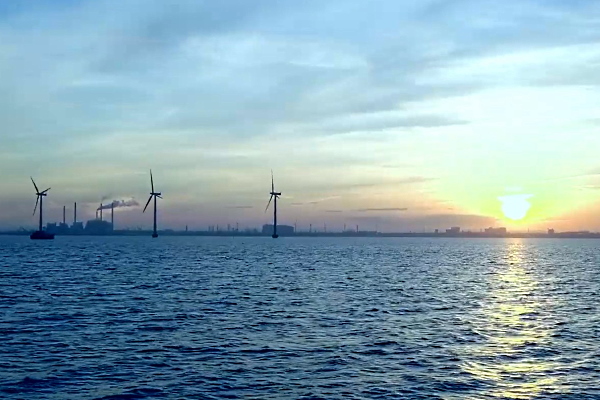To consider an application for financing, fill out the form and send it to us by e-mail along with the project brief, or contact our experts
With an economically active population of just over 10 million, Malaysia's GDP exceeds $ 350 billion and continues to show strong growth.
By relying on new technologies and advanced financial instruments, this country reduces its dependence on oil resources, conquers new markets day after day and looks confidently into the future.
Project finance (PF) in Malaysia plays an extremely important role in this transformation.
Capital-intensive projects such as the Pengerang refinery, as well as the Pan Borneo Highway, Mass Rapid Transit 2 infrastructure projects are shaping the future of Malaysia using project finance tools and large overseas investments.
Sedona Investments, an international financial company, is ready to offer you with financing and act as an EPC contractor in the implementation of the most daring and ambitious investment projects.
Our company provides project finance services in Malaysia and other countries of Southeast Asia, offering professional advice from experienced financiers, lawyers and project managers, as well as comprehensive support for your projects.
Project finance in Malaysia: history
Analysis of the Asian market for large investment projects using project financing methods is of interest for several reasons.Firstly, Malaysia, Indonesia, China and other countries of the Asian region have occupied more than half of the global project finance market in just 20 years, from the 1990s to the early 2010s.
Secondly, the development of this market was carried out on the basis of "imported" concepts of project finance, mainly originating from the United States.
The energy sector in Southeast Asia has absorbed most of these advances. It should be noted that Malaysia and its neighbors were the first markets where the first projects of "financial investors" were successfully implemented.
First of all, it was the "Independent Power Project" (IPP), which was carried out first in Malaysia in 1991, and then implemented in Thailand and Indonesia. Later, the power facilities under this project were returned to Malaysian ownership.
The oil and gas sector also plays an important role in the Malaysian economy, and local companies are investing heavily in oil production and the expansion of the local oil refining complex.
Since the last decade of the last century, Malay business has been implementing more and more PF-based projects.
Today, one of the striking examples is the unique Pengerang Refining and Petrochemical Integrated Refinery, which has a value of $ 21 billion. Much attention is paid by Malay business and the government to the development of infrastructure in Borneo and other regions of the tropical country, for which project finance based on public-private partnerships is intensively used.
The Islamic financial market plays an important role in financing large investment projects in Malaysia.
In particular, the issuance of Sukuk (the Islamic analogue of bonds) is very popular among local companies.
The issuance of Sukuk in Malaysia reaches 30% of the global volume of this type of bond issue, which puts this country on the list of leaders in Islamic finance.
Transition to an innovative economy
In the 1990s, a lot of events took place in the financial world.Thus, we have seen the rise and fall of commercial energy projects, as well as a slowdown in the development of private finance initiative (PFI).

Project finance in Asia has experienced several fluctuations, including due to the changing role of private investors in the energy sector. Despite all the difficulties, we see a number of large-scale projects in Southeast Asia in the first half of the 1990s, although similar energy projects in the UK and the United States began to be implemented only in the late 90s.
Over the past 30 years, project finance in Malaysia has become a trend, contributing to the dynamic development of the local economy and the expansion of the presence of foreign companies. In general, the international character of project finance began to appear on the Asian market, which was accompanied by the implementation of numerous international pilot projects in energy, infrastructure and other areas.
Subsequently, similar projects were, to one degree or another, transferred to European countries, Great Britain and even the United States.
Malaysia, as one of the most dynamic economies in the region, has always been at the forefront of progress, absorbing financial innovation and integrating it harmoniously with its economic traditions.
The development of project finance in Malaysia and Southeast Asian countries has become a catalyst for the growth of the market for innovations in energy, IT and public infrastructure. The last stage in the development of PF in the region is distinguished by the transition to advanced capital-intensive projects of an innovative nature. These can be innovative infrastructure, industrial facilities, solar power plants or projects related to alternative energy.
In recent years, Asian players, including strong Malay companies, have begun to make more active use of PF tools.
Implementing important national projects (infrastructure projects, development of natural resources and power generation) and possessing significant assets, local companies aggressively enter the global project market.
Project finance and its role in the Malay economy
The implementation of any investment project requires a professional organization of its financing.Project finance is an innovative way of organizing the financing of an investment project, requiring the initiators to create a new legally separate company (SPV, SPE) for the implementation of this project.
The peculiarity of project finance is that providers use various financial instruments (equity, debt, derivatives) and various types of contracts to finance a project.
The future cash flows generated by such a company will guarantee debt service and the return of borrowed funds, and the distribution of project risks is carried out between the parties involved in its implementation and most prepared to cover certain risks. Project finance services in Malaysia have been considered one of the most important tools for implementing large-scale and capital-intensive projects for several decades.
Project finance is one of the priority instruments for stimulating the country's economic growth, which provides favorable conditions for raising funds for Malay companies with insufficient creditworthiness.
The most important feature of the PF is that the project sponsor does not provide its own assets as collateral, shifting all responsibility for the project's debts to the SPV. As the funds are used at the investment stage, the created (acquired) assets can be formalized as collateral.
The latter feature makes it possible to classify PF as one of the most risky forms of financing from the point of view of lenders. This requires a thorough analysis of the project and the development of an effective system of contractual relations, adapted to the risks and needs of the specific project.
Business benefits of project finance
In the past decades, the Malay economy has been forced to seek sources of borrowed funds, technology and skilled professionals abroad.For a long time, the country did not have either sufficient resources or personnel.
To modernize the agricultural economy and take a quantum leap into the future, the government and local companies have successfully used various models of project finance and attracted large foreign contractors to implement high-tech and expensive projects under the EPC contract.

The main advantage of project finance services for Malaysia is the ability to concentrate significant financial resources on solving a specific business problem, and to localize project risks at SPV. As mentioned above, this company is founded to carry out a specific project, it is responsible for its implementation and usually has no financial history or assets to collateral.
Responsibility and risks are distributed among the project participants and are regulated by a set of contracts and agreements, which is very convenient for the current economic realities.
Table: Differences between project finance and other forms of financing.
|
Criterion
|
Equity
|
Issue of bonds
|
Bank loan
|
Leasing
|
PF
|
|
| Time of use of borrowed funds | Unlimited | Close to the project life cycle | Equal to project lifecycle | |||
| Dividend and reinvestment policy | Management makes decisions independently of lenders and investors | Immediate payment of dividends without reinvestment | ||||
| Complexity of the financial structure | Low | Average | Low | High | ||
| Transaction costs | Low or high (with additional emissions) | Average | Low | High | ||
| Minimum funding threshold | + | + | - | + | ||
| Basis for assessing creditworthiness | The sponsor's financial health, assets and overall level of solvency | Analysis of an investment project, its assets and cash flows | ||||
| Secondary market | Developed with additional issue | Well developed | Limited | |||
| Equity to debt ratio | Debt usually does not exceed 30% | High ratio | Usually a high ratio exceeding 60% | |||
| Consequences of the bankruptcy of sponsors | Freezing an investment project | Bankruptcy does not affect the project | ||||
The above table illustrates the main advantages and disadvantages of project finance for Malay businesses.
Among the main advantages of the PF for the borrower, the following aspect can be highlighted.
Separating a specific investment project from the main business and transferring part of the risks to the lender (no recourse) provides a relatively high level of financial leverage. In addition, obtaining borrowed funds does not worsen the balance sheet of the borrower's company. This method of financing provides the borrowing company with the opportunity to implement very large projects without diverting a significant amount of resources from the company's core business.
The main disadvantages of the PF for the borrower are:
• The high cost of borrowed funds, which is explained by the increased interest on the loan, as well as high transaction costs.
• The complexity of organizing the PF system within the framework of the Malay legislation, which requires the involvement of professional consultants and significant time costs.
• Tight control of creditors over the project, which may lead to a loss of independence in making managerial decisions.

If we consider the PF from the point of view of the lender, then the advantages here are higher profitability compared to other types of lending, the absence of off-project risks, as well as the possibility of transforming part of the loan into the equity capital of the future company.
The main disadvantages of the PF for the lender are:
• Limited recourse to the owners of the project company.
• The need for a thorough assessment of the project and control over its implementation, including highly professional risk management.
The current stage of development of project finance in the Malay economy is characterized by a variety of areas of its application. First of all, these are projects related to the extraction, processing and transportation of natural resources, especially oil and gas.
Project finance services in Malaysia are also actively used in the power industry (construction of power plants and power lines), as well as in the implementation of so-called infrastructure projects (construction of highways, airports, water treatment plants, etc.).
Our financial services in Malaysia: investments and bank loans
The financial company Sedona Investments (United Kingdom) specializes in the implementation of capital-intensive investment business projects, actively supporting private customers and governments all the way from the idea to the launch of the facility and its operation.For more than 25 years, our company has been introducing advanced financial instruments, offering profitable solutions at any stage of projects. Based on years of experience and professionalism, our project finance services in Malaysia will help you successfully implement the most complex projects in the oil and gas sector, energy sector and other industries.
EFSC offers project finance for solar power plants, wind farms, refineries, mines and other facilities in many countries around the world.
We offer investment engineering, financial modeling, integrated investment project management, financial consulting, construction and a whole range of other services required for a turnkey project. Our list of valued partners includes European banks and financial institutions, engineering companies, equipment manufacturers and research institutes.
If you are planning an investment project in Malaysia, consult our finance team at any time.
We are confident that we will find an attractive solution tailored to your business needs.













